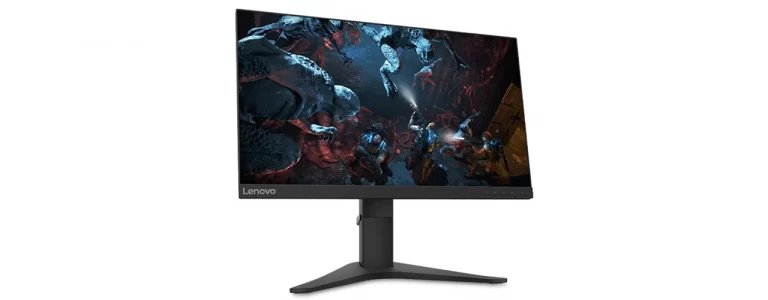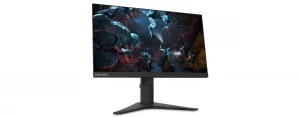The Lenovo G25-10 is a gaming monitor designed for the low-budget, no-frills crowd. With a list price of $189.99, it is significantly less expensive than many other monitors designed for Gamers. However, still provides an appropriate slate of features and overall performance that the viewer will appreciate.
This is not to argue that the Lenovo G25-10 is a bad monitor some may find it distractingly tiny at 24.5 inches with a native resolution of 1,920×1,080. However, the visuals lack crispness and seem blown out, even when the intensity isn’t maxed out. Moreover, the absence of connectors and other usual conveniences may annoy someone looking for a more robust display hub. However, if you can live with all of that, the G25-10 is a good pick at a much-expensive price.
What will you see here?
Specs
- 24.5-inch gaming monitor ready for E-sports
- 1980×1080 resolution
- 1ms response time
- The impressive 144Hz refresh rate
- Screen size: 24.5 inch
- Ports:
- 1 x HDMI 1.4
- 1 x DP 1.2
- 1 x Audio Out (3.6mm)
- Contrast ratio : 1000:1
- Brightness : 400 cd/m²
- Flicker-free technology reduces eye fatigue
Design of Lenovo G25
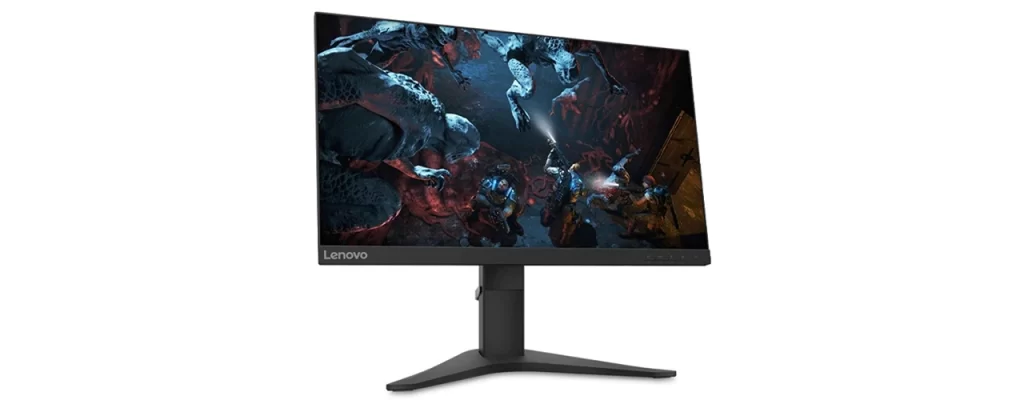
The Lenovo G25-10 stands out due to its total lack of identifying characteristics. It doesn’t take up space on a desk, measuring roughly 18.8 by 22 by 9.2 inches including its stand. In addition, its side and top bezels are equally tiny (2 mm) and inconspicuous. The bottom bezel, which measures roughly 0.8 inches, is a different story. However, it also houses the Power switch and 4 main buttons (on the right side), so that makes sense. It weighs only 11.2 pounds with its base, making it easy to carry anywhere you want to put it up.
That stand, with its two angled feet, is also fairly standard, but efficient and simple to assemble. Simply screw the bottom into the shaft and then snap the assembly into place on the back of the display. Where a conveniently located button makes uninstalling a breeze. If you choose to place the monitor on a wall, the 100×100-millimeter VESA mounting holes are available. However, if you stick with the stand, you have a lot of versatility, as you can raise or lower the display by up to 4.3 inches and tilt that forward-backwards by up to 22 degrees. A helpful cord clip is attached to the back bottom of the stand. It allows you to maintain your gaming environment at least reasonably clutter-free.
The rear-bottom ports in which the cords attach to the display are also spotless, with the power cord on the left and everything on the right. That “everything else” comprises only a 3.5mm headset connection and one DisplayPort and one HDMI input. However, there isn’t even a single USB Type-A connector. Also, there are no built-in speakers, as on the similarly priced Acer XFA240.
Screen
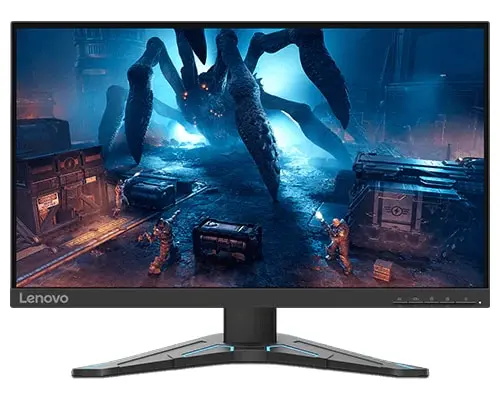
The screen’s performance, like so many other aspects of the G25-10, is adequate. Using a Klein colorimeter and DisplayCal application, the screen covered around 110 and 112% of the sRGB color gamut. However, between 78 and 79% of the DCI-P3 spectrum in each of its seven preset gaming settings. Higher-end gaming monitors, for example, can show more of the sRGB gamut. Razer Raptor 27, achieved 162%, resulting in more vibrant visuals and deeper usefulness in more professional applications. However, for a lower-priced choice, the G25-10 does admirably in this category – it performed somewhat better than the Acer XFA240.
In terms of maximum luminance, the G25-10 performed pretty well, averaging above 400 nits across the whole screen. The exclusions were Racing (216 nits) and Game 1 and Game 2 (300 and 303 nits, respectively), but if you don’t need or want to become too deep into mode selection, you won’t have too many customer complaint screens is overall brighter than that of the Acer XFA240 (352 nits), or Dell 24 Monitor (284 nits), Raptor 27 (295 nits).
Gaming Performance of Lenovo G25
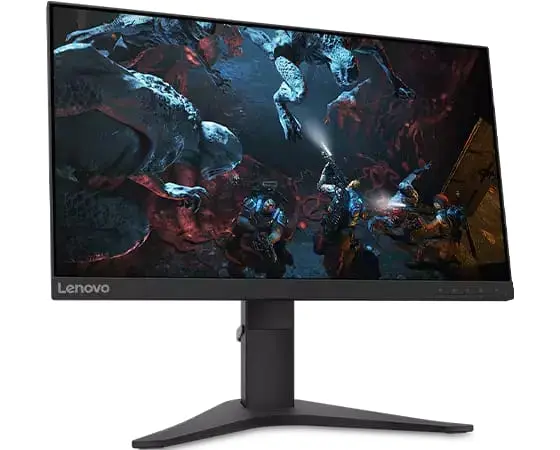
The Lenovo G25-10 checks all the boxes in terms of specifications, including a high 144Hz refresh rate, a 1ms response time, and compatibility for AMD FreeSync Premium, the intermediate tier of performance for AMD’s anti-tearing technology. Â Games from a range of genres performed admirably on the G25-10. There was only one issue: they didn’t always look that well.
In many games, the G25-pictures 10’s were blurry around the borders and weirdly distant and unclear on a computer equipped with a high-end Nvidia GeForce RTX 3080 GPU, a machine that has produced amazing images on other monitors. This was especially noticeable where text and small details were important. However, words in Sid Meier’s Civilization VI: Gathering Storm might be difficult to see, but it happened in other titles with fonts of varied styles and sizes, and the chunky smoothness was common in Windows as well. Changing the image modes did not resolve the problem.
It also didn’t help with the prevalent blown-out effect, which was most visible on the Microsoft taskbar but bleached out even darker photos slightly. Both DiRT 5 and Assassin’s Creed Valhalla received a hazy, scratchy sheen that stretched over settings to give the sensation of viewing a 1950s TV broadcast. This might be fixed by decreasing the brightness. Also changing the contrast, restoring some of the punch, but the out-of-the-box quality was never really pleasing.
The interface of Lenovo G25
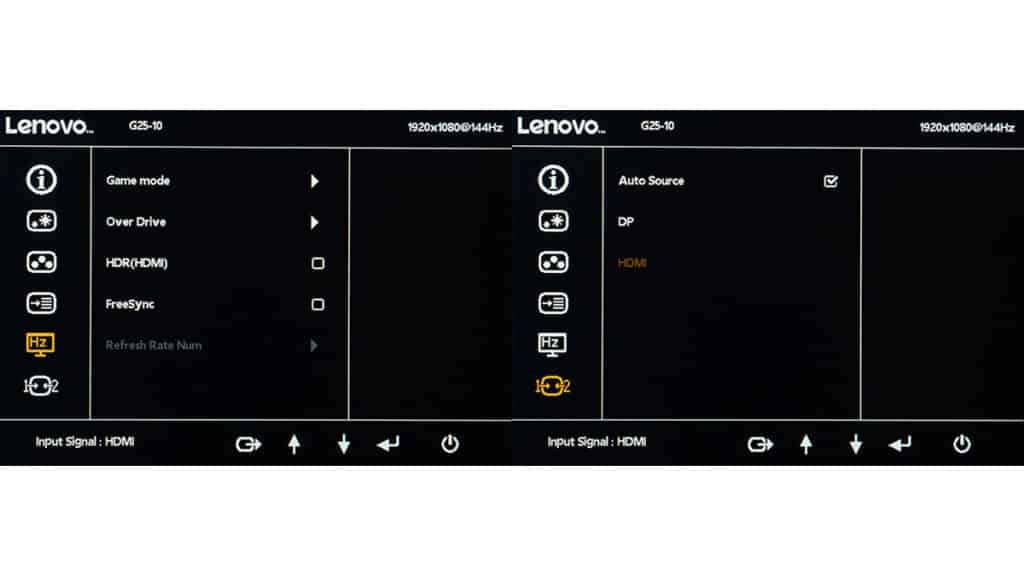
The G25-on-screen 10’s display (OSD) is simple yet efficient at bringing you to the settings you require when you really need them. Hitting the button to the left of the Power button brings up the main System menu, from that you can scroll to the bottom to submenus for overall display settings, color, monitor settings, and inputs. When the OSD isn’t currently active, you may use the other keys to access the Games, Input, and Display options menus (from left to right).
It’s a simple, straightforward navigation approach. However, the symbol for returning to the previous menu a circle with a hard to the right arrow may not be immediately apparent. If there’s a single flaw here, it’s getting to the main menu: The Power button is roughly one-third the width of the other buttons, making it easy to unintentionally click when trying to push the Menu button. However, the straightforward UI for the monitor’s basic offers is a logical choice.
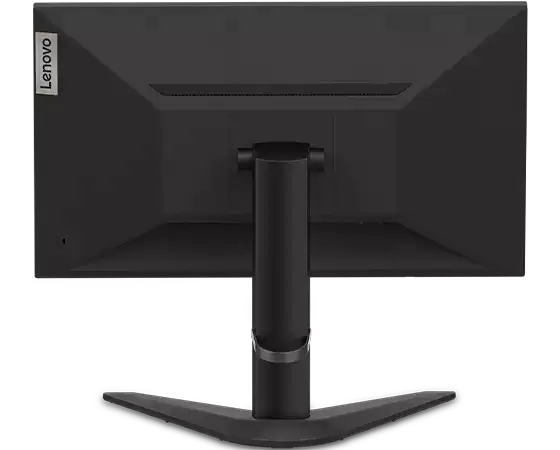
Conclusion
The Lenovo G25-10 is just for a certain sort of gamer. However, one that doesn’t need a large screen and is content with tried-and-true 1080p if it doesn’t entail draining their financial account. This does not imply foregoing many of the features that make gaming monitors, such as a 144Hz framerate and anti-tearing technology, so a restricted port selection and absence of speakers aren’t major concessions. The questionable image quality is a difficult call. However, you’re not going to get perfect images for this cheap, they may still look a bit better.
The Acer XFA240 is somewhat better purchase in this price category, coming in at around the same price, with similar luminance and color clarity and a few more capabilities. However, with its slimmer form and generally adequate features, the G25-10 serves as a no-nonsense option for achieving the gaming skills you want — although without much in the way of glitzy frills.
Read More:
- Samsung Odyssey G9 Review-Curved and ultrawide Gaming monitor!
- Best selling iPad Pro (10.5 inches) 2017 case in 2020
- Portable monitor for mac you can get in 2025!
- Laptop or Tablet?, why not get the best of both with a 2 in 1 laptop in 2025!
- Best android tablets 2025: Work, Play, and More!


